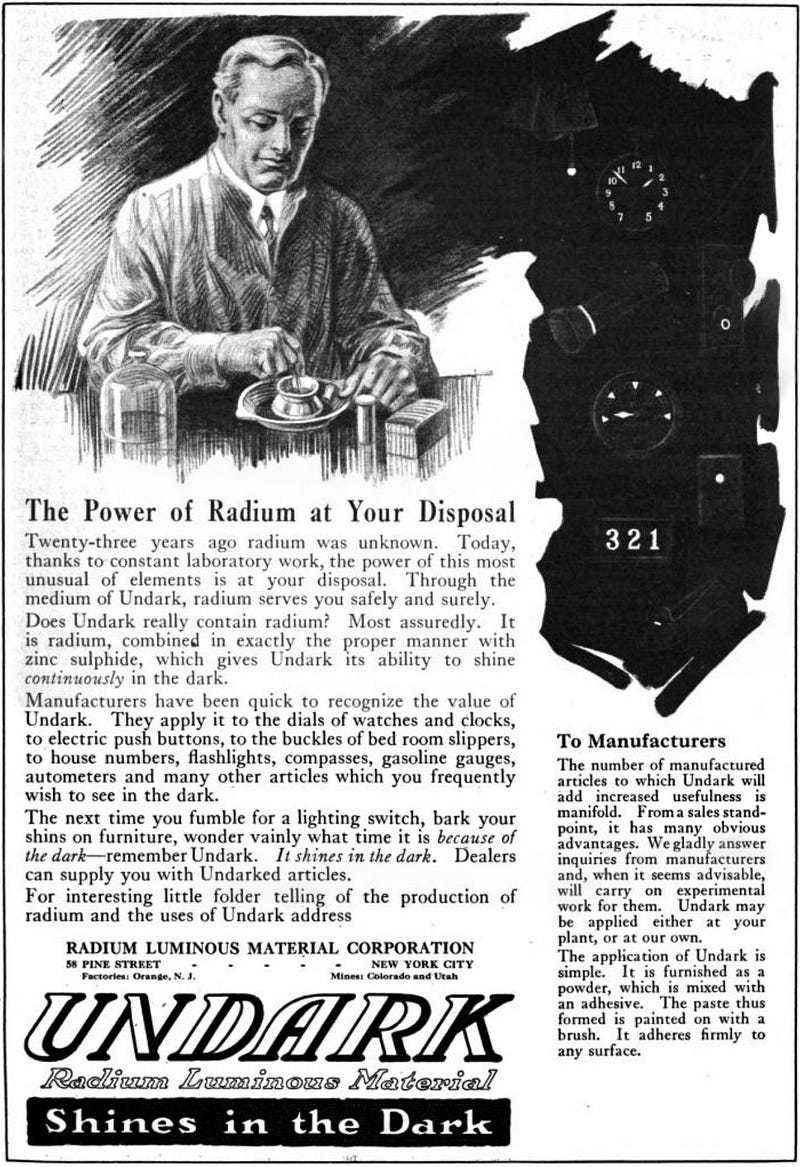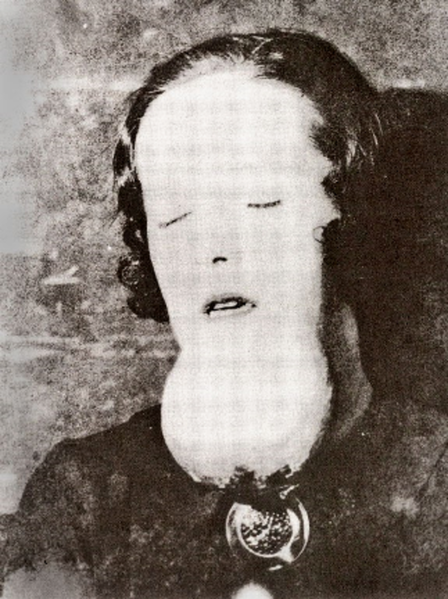The Tragic Tale of the Luminous Ladies: A Cautionary History
Written on
Chapter 1: The Dawn of a New Era
The narrative of these young women begins in 1917 when the United States Radium Corporation opened its first factory, hiring eager young workers unaware of the perilous conditions they would face. These women, often seen as pioneers in their roles, were tasked with painting watch dials using radium, a substance that allowed the timepieces to glow in the dark. This innovation was marketed as an exciting advancement for wristwatches, making them more appealing.
Their radiant glow, however, was not just a charming feature; it concealed a sinister reality. Many of these women were blissfully unaware of the harmful effects of prolonged radium exposure. They showcased their glowing skin and even applied the paint to their teeth, believing it made them more enchanting for evening outings. The allure of the luminous paint masked the grim truth lurking beneath.
Section 1.1: The Illusion of Safety
Mae Cubberley, one of the factory workers, remembered asking about the safety of the radium. The factory's manager, Mr. Savoy, reassured them that it was harmless and that there was no need for concern. This misinformation proved catastrophic, as the women were left vulnerable to the devastating impacts of radiation exposure. Historical evidence, including Marie Curie's own struggles with radiation burns, clearly indicated the dangers associated with handling radium, which should have necessitated protective measures.
Subsection 1.1.1: Misguided Beliefs

The prevailing belief at the time was that small doses of radium could be beneficial for health. This misconception led to the promotion of radium-infused products, ranging from drinks to cosmetics, all touted as health elixirs supposedly capable of prolonging life.
Section 1.2: The First Victims
In 1922, Mollie Maggia became one of the first workers to experience severe health issues, ultimately forced to leave her job. Her dentist struggled to comprehend her symptoms as she suffered excruciating pain and developed painful ulcers in her mouth. The mysterious affliction spread, leaving her in agony and unable to work.

By May 1922, Mollie's condition had deteriorated significantly. Her mouth was filled with abscesses, and her jawbones crumbled under the slightest pressure. Tragically, on September 12, 1922, Mollie succumbed to her illness at the age of just 24, her life extinguished in a horrifying manner.
Chapter 2: Awakening to Reality
As Mollie's fate unfolded, it became clear that she was not alone. Her former colleagues experienced similarly tragic outcomes, but it wasn't until a male worker fell ill that the issue gained serious attention. Dr. Harrison Martland's investigations in 1925 confirmed that radium had poisoned these women, laying the blame squarely on the United States Radium Corporation.
Radium Girls: The Dark History of a Deadly Glow - This video delves into the harrowing experiences of the women who worked with radium and the dark history surrounding their plight.
This revelation sparked widespread media coverage, emphasizing the need for accountability in workplace safety. The tragedies endured by these women marked a pivotal moment in labor rights, leading to significant reforms aimed at protecting employees' health. Consequently, the establishment of the Occupational Safety and Health Administration emerged, ensuring that the welfare of workers would be prioritized in the United States.

Glow Through It | Women's History Month & Vail Recap! - This video celebrates women's contributions to history and highlights the importance of learning from past injustices.
Through this tragedy, a new era of awareness and regulation was born, marking a significant step forward in occupational safety and the protection of workers across the nation.
